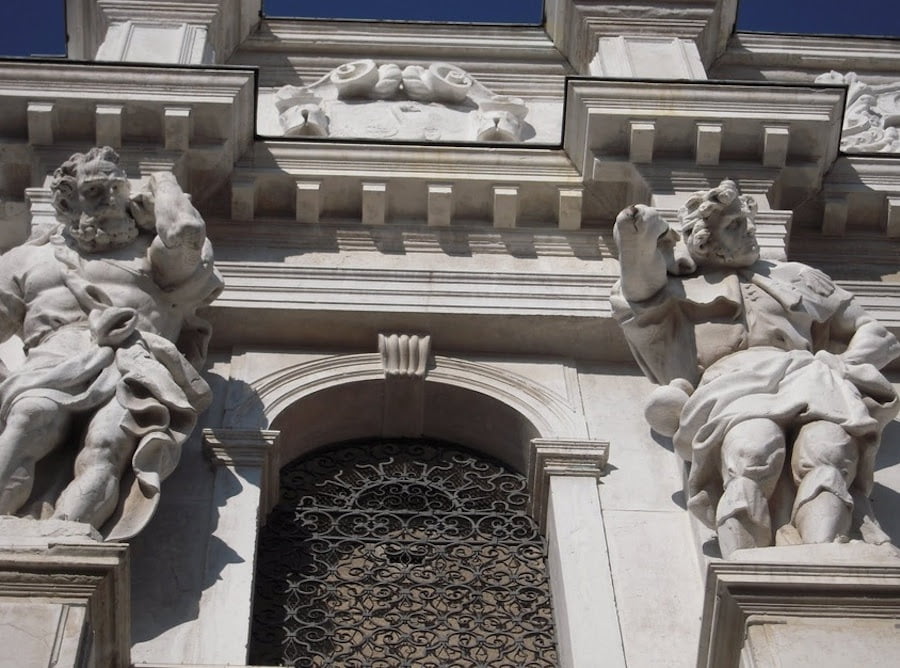Venetian Architecture Characteristics teach us 10 Design Commandments for Design Exploration. When most people don’t realize, though, is that it’s possible to apply some of the fundamental components of Venetian architecture characteristics into your own architecture or interiors. Here we’re looking the 10 Design Commandments that we can learn from Venice’s gorgeous buildings. Keep them in mind as you undertake your next Design Exploration. Not only will you come out with a better end product. But you may just feel like you’ve walked along those infamous Venetian canals. Venice is a dream destination for many. Between the one-of-a-kind canals, incredible historic and cultural offerings, and beautiful architecture style. It’s no surprise that people will travel far and wide just to experience Venetian life for themselves. Let’s explore how Venetian architecture characteristics will come in a scenario of today.
Modern Venetian Architecture Characteristics

Here are the 10 design commandments for Venetian architecture characteristics,
I) Pick A Signature Design Feature.
Every great designer needs to leave their mark on their work. The best ones can be identified with a single glance. Where Venetian architecture is concerned, the signature is definitely the Palladian window.
Palladian windows like the one pictured above are defined by a semicircular arched opening that is flanked by two pilasters on either side. It is named after Andrea Palladio, one of the movement’s key architects, and can be seen on many buildings from his early career, including Villa Godi and Villa Forni Cerato.
Even if you’re not a professional, take the time to find your signature feature. It could be a pop of color, the use of a particular texture, or a furniture configuration. Anything will work as long as you let your individuality shine through.
II) Find Your Design Inspiration.
The first step in any design project is gathering inspiration. After all, how can you know which elements to choose for your space if you don’t have a feel for your likes and dislikes? A look at Venetian architecture shows us that it’s okay to borrow from looks that we love.
Unsurprisingly, Venetian architecture characteristics buildings take a lot of their inspiration from European Gothic architecture. That was the popular style of the time and its influence can be seen throughout the rest of Italy and the continent. With a simple glance, you can see a heavy emphasis on light, ornamentation, and asymmetry that is clearly borrowed from the Gothic style.
For your design inspiration, spend some time searching interior design websites like Freshome. Go to home improvement stores and shops that focus on décor. Keep an eye out for looks that you love and make a note to copy that style later. Just remember that there is a difference between drawing inspiration and stealing a designer’s work.
III) Take Stock of Your Space’s Needs.
Venice is truly a place unlike any other. Where else can you find a city that is so seamless integrated with its surrounding natural landscape? However, its one-of location also comes with its own set of unique needs for the architects to consider.
Look at the rooftops of Venetian architecture characteristics of Gothic buildings. Do you see anything that sticks out as unusual? If you guessed the fact that they feature large chimneys you are correct. Since these buildings were so tightly compacted together and they were made of wood, fire was a huge concern. Architects made sure to add chimneys to their design to keep embers from escaping and setting the buildings ablaze.
Before you start designing rooms in your own home, take some time to consider what your challenges will be. Maybe you are trying to decorate a small space or are working with a limited budget? Whatever your obstacles are, make an effort to solve them before you get started. Trust us, the end product will be well worth any initial investment of time.
IV) In Design, Materials Matter.
These days, we tend to look at design materials as something that’s secondary to function. Looking at Venetian Gothic architecture shows us that materials are an integral part of the design process and can often add to your aesthetic.
Venetian architecture characteristics took cues from their surroundings. Since the city is right on the water its ground tends to be softer and is subject to rising and waning tides. As a result, Venetian architecture characteristics buildings are unable to bear the weight of other Gothic structures. Architects of the time chose wood and brick over the traditional marble and heavy stained glass in order to compensate.
The materials that you choose can also have an effect on your spaces. For instance, if your space suffers from a lack of natural light, focus on choosing brighter woods and fabrics to help lighten up the space.
V) Don’t Hesitate To Mix Styles.
A lot of design websites will encourage you to align yourself with a particular style. Do you prefer the clean look over of a Scandinavian interior over the comforting feel of one that is French Country? It can sometimes feel like you have to pick one aesthetic and never look back, but Venetian Gothic structures offer important lessons on the benefits of mixing styles.
In addition to the Gothic style, you’ll also see that Venice hosts influences from the Byzantine and Moorish styles that were popular with traders who visited Venice from the East. The pointed or inflected arches that are common in Venation design are unquestionably a product of Moorish culture.
You, too, can benefit from a little mixing and matching. If you’re furniture is super sleek why not try adding visual weight to the space by adding heavily-patterned accents.
VI) Repeat Elements To Create Consistency.
Have you ever wondered why some design trends pass as fads while others are studied for years to come? The answer is consistency. If the same design elements are repeated over an over again, historians are more likely to group them together and look at them as a cohesive unit.
Of course, Venetian architecture characteristics (Gothic architecture) has its own set of unifying elements. These include: semicircular arches, intricate traceries, and long passageways that was often opened by a loggia, and an overall perception of weightlessness.
On a much smaller scale, you cam use reputation to create a sense of cohesion in your spaces. You could mirror paint colors in your decor items, repeat the same pattern in your area rug an throw pillows, or choose the same finish for you appliances and lighting fixtures.
VII) Planning Your Space Is Key.
On that note, aside from figuring out how to overcome obstacles, it’s also important to take the time to brainstorm ways to really make your spaces special. If you can figure out a way to spin those design challenges to your advantage, you’ll end up loving the finished product more than ever.
What Venetian architecture characteristics lacks in sprawling floor plans is more than made up for in height. The buildings are tall and elegant with floor-to-ceiling windows to let in tons of light and plenty of balconies to let occupants enjoy the fresh air.
Take a similar approach to your spaces. If space is your challenge, plan ahead to leave room for storage pieces. If you know that you’re moving into an apartment where you are unable to paint or customize walls and flooring, challenge yourself beforehand to find decor items that will bring color to the space while really showing your personality.
VIII) Design Is Always Changing.
If you walk down the streets of Venice, you’ll likely notice that something feels amiss. These spacious and imposing palaces – places that obviously are the product of careful planning and tons of hard work – are built backwards. They don’t face the streets.
However, if you think about the time when these structures were built, the placement made perfect sense. At that time, Venice’s canals were its streets. The roads that we use today were formulated to accommodate modern modes of transportation.
As you work on your own projects, remember that design is never stagnant. It’s always changing and evolving into something new. That’s part of the fun! Even after you think you’ve completed your space, keep an eye out for improvements. You never know what you’ll find.
IX) Brainstorm New Takes On Old Conventions
When we look at architecture from the past, we tend to view them as being completely different for their time. Design does not exist in a vacuum. Every innovation offers a small tweak on the conventions of the style that came before it and the same is true for Venetian Gothic structures.
If you look carefully at Venetian architecture characteristics buildings, you should be able to easily identify influences from Classical Greek and Roman architecture. Look out for lots of columns and an open feel.
However, where classical structures are often minimalist, a Venetian architecture characteristics style favors the ornate and opts for rounded lines as opposed to straight edges.
When looking over your own spaces, look for ways in which you may be able to twist traditional conventions. Take a break from achieving balance and play around with the juxtaposition of asymmetry.
Forgo traditional color schemes and see if you can integrate five colors into your interiors. Just remember to pepper these innovative moves in with more traditional elements to keep your design looking grounded.
X) Always Add A Little Glamor.
When talking about modern design, it’s not uncommon to hear the phrase “Less is more”. As the dominant trends tend to get simpler and simpler, one can easily get the impression that more ornate styles are heavy-handed and outdated. However, Venetian architecture characteristics shows us that there is still beauty in detail.
Venice’s buildings are very elaborate. The capitals of their columns feature ornate carvings and stone gargoyles in stark contrast to the plainer Greek and Roman styles. Jewels also played a large role. It was not uncommon for the floor of a interior courtyard to be studded with precious stones.
The key toward successfully bringing this lesson into your modern interiors is not to overdo it. Choose one or two flashy items and balance out the room with more classical pieces.
There’s no question that canals will always be the first thing that we think of where Venice is concerned. But there is so much more to that beautiful city. In particular, its Venetian architecture characteristics style is a feat well worth discussing. Take a look above to see how you can incorporate some of the principals of the Venetian Gothic style into your interiors.







Leave a Comment
You must be logged in to post a comment.